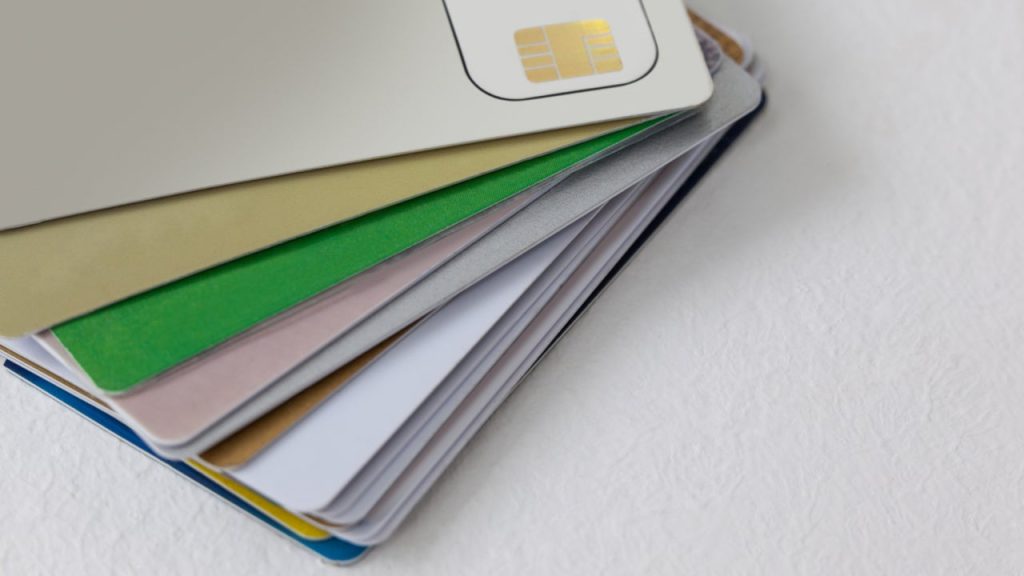Credit card experts are full of tips and tricks to help you get the most out of your credit cards. Card issuers have their own tips and tricks – but they work a little bit differently than what the experts will tell you.
It is a business for the card issuers, after all, and they’re full of smart marketing tactics to make sure they’re successful. And the way issuers succeed isn’t always aligned with how you can succeed as a card user.
“Credit card marketing is effective because it taps deeply into how we think, feel and behave around money,” says Megan McCoy, a certified financial therapist and assistant professor of personal financial planning at Kansas State University. She cites studies from MIT Sloan showing that using credit cards activates the brain’s reward center in the same way that addictive behaviors do.
This dopamine hit can drive more frequent and higher-value purchases, larger tips and increased impulse spending.
— Megan McCoy, certified financial therapist
To recognize when an advertisement might lead you to unwise decisions, you’ll want to learn the types of promotions card companies often use. Let’s take a look at the most common marketing tricks card issuers employ and how you can make them work for you, not against you.
1. Large welcome bonuses
A welcome bonus is perhaps the best opportunity to earn a large amount of rewards on a credit card. These offers can be very appealing. After all, they provide a chance to earn hundreds of dollars — sometimes more — if you spend a certain amount within a specified number of months.
“This creates a strong incentive to apply and start spending quickly,” McCoy says. “For many, it feels like free money, even if it ultimately encourages increased spending and potential long-term debt.”
Before you take advantage of a welcome bonus offer, look at the spending requirement. Is the amount realistic given your budget? Are you risking getting into debt just to earn the bonus? Be honest with yourself about such questions before you apply.
2. 0% APR offers
One of the main risks associated with credit cards is running up high APR charges. When you remove that risk, it might be tempting to overspend. The debt almost doesn’t feel real when you’re not paying interest and have a long time to get rid of the balance.
But that time is limited. The offer you get with any 0 percent APR credit card is a promotion with an end date. If you still carry a balance after that date, it will start accruing interest again.
Moreover, store credit cards commonly advertise deferred interest offers. That means if you still owe on the credit card after the offer expires — even just $1 — you’ll owe all the interest that was waived.
Read the fine print carefully before signing up for any credit card that provides a 0 percent interest period. It’s best to use them strategically — for example, when you’re planning a large purchase or transferring a balance to pay off existing debt. The key is to have a solid plan in place to pay off the balance before the 0 percent promotion expires.
3. Pre-approval offers
At times, I get pre-approved offers in the mail for the cards that I praise in my work. It feels good to receive them. It means the issuer thinks I’d make a good cardholder. It approves of my credit history that I’ve worked so hard on.
“Language that implies exclusivity or guaranteed approval, such as ‘You’re pre-approved’ or ‘You’ve been selected,’ plays on people’s desire to feel special and chosen,” McCoy says. “This also reduces perceived barriers to applying and increases the likelihood of impulsive sign-ups, particularly when framed as a limited-time opportunity.”
I never apply for such offers simply because I have all the cards I need. I recommend you take a careful approach as well: only apply for cards you’d get even if you weren’t “selected”. Each application should be a thought-out decision rather than an impulse.
4. Status imagery
Some credit cards aren’t just a payment method. They’re also a status symbol and promoted as such.
Credit cards are framed as tools of empowerment and aspiration, which encourages people to equate card membership with success. This plays into the powerful social comparison dynamic of keeping up with the Joneses — the subtle but constant pressure to match or exceed others’ lifestyles, even if it comes at the expense of long-term financial health.
— Megan McCoy, certified financial therapist
Premium credit cards come with triple-digit annual fees. Often, they’re metal cards: heavy, sleek and with an attractive design. They provide benefits that make you feel like a part of an exclusive club:
- Elite airline and hotel statuses
- Airport lounge access
- Hundreds of dollars in statement credits at upscale resorts and popular restaurants
What’s not to want?
If your existing spending naturally fits what a particular premium card offers, it might indeed be a good option. People who don’t consider an annual fee north of $600 as a particularly significant expense might also appreciate the perks without worrying about the ongoing costs. But if neither applies to you, it’s likely you’ll find more value in a different kind of card.
5. Statement credits
Speaking of statement credits, those are easy to fall for. Card issuers usually advertise these benefits, stating you’ll get hundreds of dollars annually in specified categories or with certain brands.
Indeed, you can get hundreds of dollars in value with such cards — even thousands. But you need to pay attention to the terms and conditions. Often, statement credits are paid out in small increments. For instance, you might get a $10 per month credit on food delivery that doesn’t roll over, but promotional materials will highlight that you get $120 per year. Or a $500 annual hotel credit may consist of two $250 credits every six months.
When you keep track of multiple statement credit benefits, it can be easy to miss something. Or you may end up adjusting your spending to take advantage of the card perks, which ultimately results in unnecessary expenses.
Make sure to understand how these benefits work on a card you’re interested in before you apply. And if they’re the main selling point for you, be honest with yourself: Will you really use them regularly enough without changing your spending habits? If the answer is no, the card might not be the best choice.
The bottom line
Credit card promotions are designed to pique your interest. Many of them can be incredibly valuable — but only when you’re intentional about which cards you get and how you use them.
Before you apply, consider the main reason you need a credit card, whether it’s rewards, credit building or benefits. If rewards and perks are a priority, they should align with your lifestyle and current spending patterns. Consider whether you expect to carry a balance, and if so, how you plan to pay it off.
And finally, McCoy suggests, “Look beyond the first-year perks and focus on long-term costs and benefits.” If the card has little to offer to you once all the limited-time promotions expire, it might be best to stay away from that “apply” button.
Why we ask for feedback
Your feedback helps us improve our content and services. It takes less than a minute to
complete.
Your responses are anonymous and will only be used for improving our website.
Help us improve our content
Read the full article here









